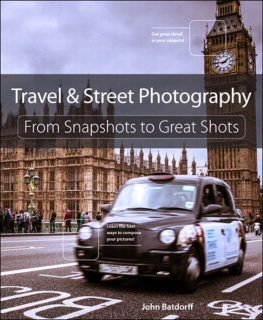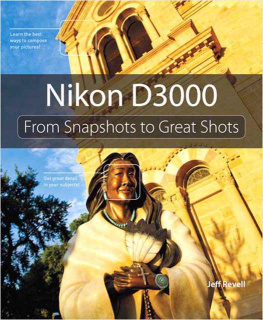Vineyard - Setting up your shots great camera moves every filmmaker should know
Here you can read online Vineyard - Setting up your shots great camera moves every filmmaker should know full text of the book (entire story) in english for free. Download pdf and epub, get meaning, cover and reviews about this ebook. City: Studio City, year: 2008, publisher: Michael Wiese Productions, genre: Children. Description of the work, (preface) as well as reviews are available. Best literature library LitArk.com created for fans of good reading and offers a wide selection of genres:
Romance novel
Science fiction
Adventure
Detective
Science
History
Home and family
Prose
Art
Politics
Computer
Non-fiction
Religion
Business
Children
Humor
Choose a favorite category and find really read worthwhile books. Enjoy immersion in the world of imagination, feel the emotions of the characters or learn something new for yourself, make an fascinating discovery.

Setting up your shots great camera moves every filmmaker should know: summary, description and annotation
We offer to read an annotation, description, summary or preface (depends on what the author of the book "Setting up your shots great camera moves every filmmaker should know" wrote himself). If you haven't found the necessary information about the book — write in the comments, we will try to find it.
Vineyard: author's other books
Who wrote Setting up your shots great camera moves every filmmaker should know? Find out the surname, the name of the author of the book and a list of all author's works by series.
Setting up your shots great camera moves every filmmaker should know — read online for free the complete book (whole text) full work
Below is the text of the book, divided by pages. System saving the place of the last page read, allows you to conveniently read the book "Setting up your shots great camera moves every filmmaker should know" online for free, without having to search again every time where you left off. Put a bookmark, and you can go to the page where you finished reading at any time.
Font size:
Interval:
Bookmark:
Jeremy Vineyards Setting Up Your Shots breaks down the prep for shooting with excellent visual accompaniments. The books many illustraions explain how and why each shot was chosen and the effect it creates for the audience. Shots is a great asset for conceptualizing setups and for learning more about filmmaking.
Ross Otterman, director, June Cabin
Setting Up Your Shots is a great starting place to learn the rules of the road in visual storytelling. And if youre striving for avant-garde and want to break the rules, it helps to know what they are. This book lays out the basics and with examples. Quick and easy read and reference.
Paul Clatworthy, CTO, PowerProduction Software, www.powerproduction.com
Jeremy Vineyard, with wonderful illustrations by Jose Cruz, simplifies complicated shots and takes you beyond amateur filmmaking, into the realm of professional filmmaking. Before you shoot anything read this book.
Matthew Terry, screenwriter and teacher, www.hollywoodlitsales.com
Setting Up Your Shots makes a complicated and intimidating subject easy enough for a novice to understand. By reducing the art to concrete terms and combining them with simple illustrations (by Jose Cruz), Vineyard has crafted a primer that can help filmmakers up their game to a higher performance level.
Catherine Clinch, Publisher, www.MomsDigitalWorld.com
This widescreen as in horizontal format tome is a quick-and-easy tutorial on the cinematic language. Supported by excellent storyboards, framing, camera movement and editing techniques are conceptualized simply, along with the emotional and psychological impact behind each choice. A wide variety of movies are cited as examples for you to check out yourself. This is a great reference for beginners and pros alike.
Douglas Bankston, Managing Editor, DV Magazine / DV.com
Great Camera Moves Every Filmmaker Should Know
2nd Edition
Published by Michael Wiese Productions
12400 Ventura Blvd. #1111
Studio City, CA 91604
(818) 379-8799, (818) 986-3408 (FAX).
mw@mwp.com
www.mwp.com
Cover design by The Art Hotel
Printed and manufactured by McNaughton & Gunn
Copyright 2008 by Jeremy Vineyard
All rights reserved. No part of this book may be reproduced in any form or by any means without permission in writing from the author, except for the inclusion of brief quotations in a review.
ISBN 978-1-932907-42-1
Library of Congress Cataloging-in-Publication Data
Vineyard, Jeremy, 1977
Setting up your shots : great camera moves every filmmaker should know / Jeremy Vineyard. -- 2nd ed.
p. cm.
Includes index.
ISBN-13: 978-1-932907-42-1
ISBN-10: 1-932907-42-4
1. Cinematography. I. Title.
TR850.V56 2008
778.5'3--dc22
2008009566
I found the Internet Movie Database to be invaluable when researching this book. The IMDB is an online reference tool with information on thousands of films, television shows, actors, directors, writers, and more. It can be found at imdb.com.
Netflix is another good option for those of you who want to keep up on everything from art films to new releases. Again, an easy find at netflix.com.
Thanks again to Jose Cruz for all his hard work and to Michael Wiese Productions for sending the royalty checks on time. I would also like to thank the many readers who purchased and supported the first edition of this book, making it a top seller in its field. I hope you enjoy the second edition as well.
If you are an aspiring filmmaker, this book is an ideal first choice to begin your studies. You can browse through the pages in any order, discovering new cinematic techniques. You can use these techniques in your own short films, watch the movies listed to see how the professionals use them, and expand the domain of your filmmaking knowledge.
If you are a film buff, youll find that this book is easy to understand, even for those who dont know anything about the film industry. If you want to know more about how movies work, study the techniques and watch for them in your favorite films. The movie-going experience can be made more enjoyable by understanding how cinema works.
If you are an experienced filmmaker, a storyboard artist, or an animator, use this book as a reference. It is the culmination of years of research. Why should you have to spend that amount of time when its already been done for you?
Stir lightly and enjoy what simmers.
This book began in the late 90s. I couldnt afford film school so my only option was to teach myself how movies work. How do you go about that? Well, you sit down and watch hundreds of films and you take notes. I started to re-view every scene I had previously watched and enjoyed as a viewer and tried to approach it with an analytical eye.
There are many common cinematic techniques that are shared across all films. Filmmakers rely on a set of proven cinematic brush strokes to communicate specific ideas/emotions to the audience. If these techniques can be categorized, it should help those who are diving into the realms of filmmaking knowledge for the first time.
Each cinematic technique has been given a unique name a condensed version of the elements purpose and description. These names are arbitrary you can call them whatever you want. The advantage to a label is that it gives you a tool to identify techniques used in the films you watch. This skill will greatly enhance your ability to learn from actively watching films, rather than only passively enjoying them. I have listed example films for many of these techniques, as well as storyboards. If you are interested in a particular technique, why not rent one of the example films?
Filmmaking is more than a technical skill. Its about establishing relationships with the cast and crew, becoming a leader, and pursuing your vision. Technical knowledge alone wont guarantee that youll become a great filmmaker, but it will help you become more fluent in the language of your craft.
As the result of years of research, the second edition has a lot more detail and information. I have added references to over 200 new films (350+ films referenced in total) and several new filmmaking techniques. Even if you already own the first edition, the volume of additional content makes this new version a valuable upgrade.
The criticisms for the first edition very commonly referred to the book as too simplistic. It seems that those who make this claim are missing the point. This book is intended to be a fast-and-easy mechanism to quickly gain an overview on filmmaking. Sure, there are several in-depth monster texts out there, but why should everyone be forced to slog through reams of material to get to the good stuff? Authors often inflate their egos by including irrelevant and unnecessary information, simply to boost word count. Not my thing.
Sometimes brevity can be the most effective approach.
I set out to write this book because I wanted to reach beyond the basic cinematic elements that many filmmaking books describe. One of the best ways to learn about these constructs is to watch as many movies as you can. Unfortunately, not everyone whos interested in filmmaking can dedicate that kind of time to the process. This book simplifies the ordeal by compiling the most common and distinct filmmaking techniques taken from hundreds of films.
It cant hurt to go over the basics before we arrive at the next plateau of cinematic techniques. I have attempted to provide methods for conceptualizing each element a way of visualizing what the technique actually looks like. Visualization skills should allow you to look at the world around you in a new, cinematic context. This new sight is similar to what artists see when they start to recognize lines and colors in the world, allowing them to create abstract representations of reality.
Next pageFont size:
Interval:
Bookmark:
Similar books «Setting up your shots great camera moves every filmmaker should know»
Look at similar books to Setting up your shots great camera moves every filmmaker should know. We have selected literature similar in name and meaning in the hope of providing readers with more options to find new, interesting, not yet read works.
Discussion, reviews of the book Setting up your shots great camera moves every filmmaker should know and just readers' own opinions. Leave your comments, write what you think about the work, its meaning or the main characters. Specify what exactly you liked and what you didn't like, and why you think so.







